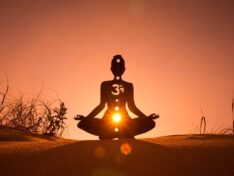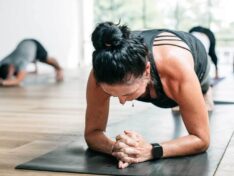Top 5 Yoga Poses to Build Strength in Your Core
With all the many benefits of yoga, increasing core strength is at the top of the list. These top 5 yoga core exercises are sure to help!
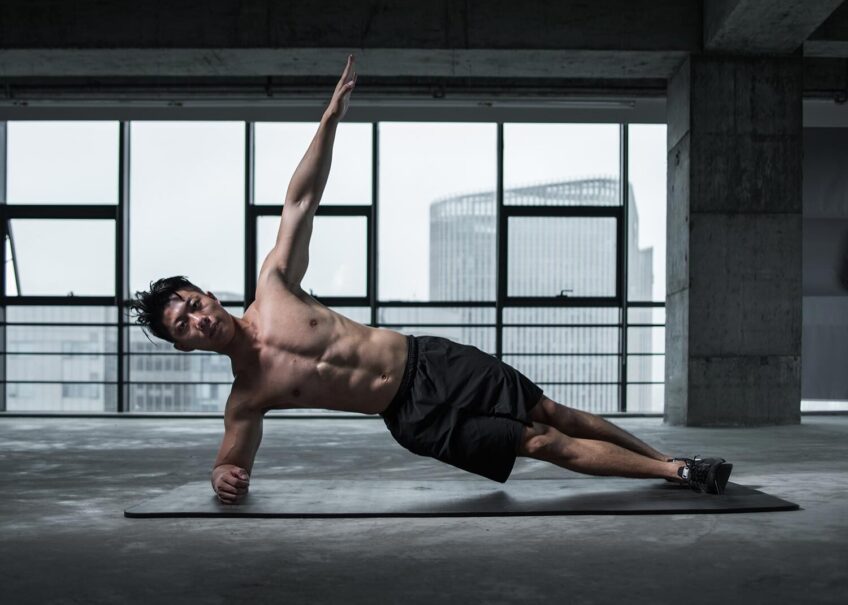
You’ve probably heard it before, and I want to state that strengthening your core is one of the most important things you can do for your physical health.
Not only does your core help support your posture and protect your back, but it’s also essential for overall stability and strength. And, as a bonus, it’s also great for your mental and physical health.
And no, it’s not about having a visible 6-pack (but if you do – that’s amazing too) -- there’s a lot more going on with the muscles in your torso, particularly with your transversus abdominis (the muscle that wraps around your torso supporting your organs and providing stabilization, so you’re able to bend and twist).
If you’ve been reading along and are thinking to yourself, “Umm, I think I need some help,” well, there’s good news.
If you commit to ten minutes daily, you can start building awesome core strength with these five yoga poses. These exercises aren’t going to help you build muscle bulk necessarily. Instead, they will help build core strength so you develop long, lean muscles with incredible stamina.
Your core comprises various muscles that support your spine and pelvis. Together, they provide balance and stability and generate the power to lift and move the body.
These muscles that make up your core include:
- Front body - transverse and rectus abdominus. These muscles run from your waist to just below your sternum.
- Back body - iliocostalis, and multifidus, spinalis, longissimus, erector spinae, and latissimus dorsi.
- Side body - external and internal obliques (the muscles that run along the side of your body from your ribs to your upper hips) and your quadratus laborum (the muscles that run along the sides of your abdomen).
- Hip flexors - hamstrings, rectus femoris, inner thighs, and gluteus maximus and medius.
Yoga conditions your abdominal area for balance and strength, and because your abdominal muscles support the correct curvature of your spine, strengthening your core will improve posture, reduce back pain, and strengthen back muscles.
So, let’s get into my top exercises for strengthening core muscles:
1. Bird Dog Pose (Parsva Balasana)
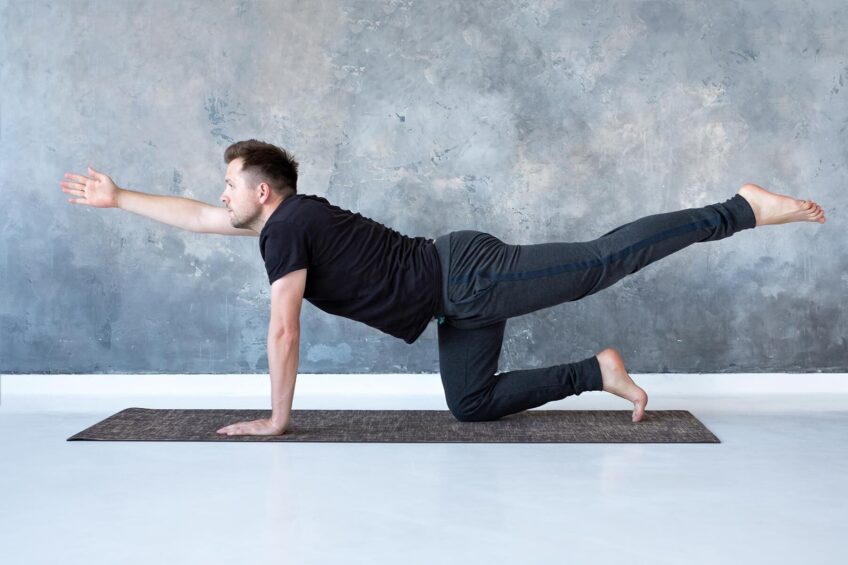
This pose is great because it combines many different muscle groups in a single exercise. It targets the core, hips, back, and shoulders -- to maintain stability, you’ll also be working your hamstrings, obliques, piriformis, pelvic floor muscles, serratus, pecs, and triceps. It’s quite a list!
And, before you dismiss this pose, it really does look easier than it actually is – especially as you continue holding the position (don’t forget to breathe!)
Try it for yourself:
- Begin on all fours in the tabletop position, stack your knees under your hips and hands under your shoulders.
- Engage your abs to maintain a neutral spine, drop your shoulder blades, and draw them together.
- Inhale, exhale and raise your left leg and right arm while keeping your hips and shoulders parallel to the ground.
- Lengthen your neck, tuck in your chin, and set your gaze on the floor.
- Hold the position for 3 to 5 seconds, then lower to the starting position.
- Repeat with the opposite leg and arm, then return to the starting position.
- Repeat 8 to 12 times on each side.
Pro Tip: You can also do an advanced variation of this pose by incorporating a "crunch" with the extended limbs.
2. Boat Pose (Navasana)
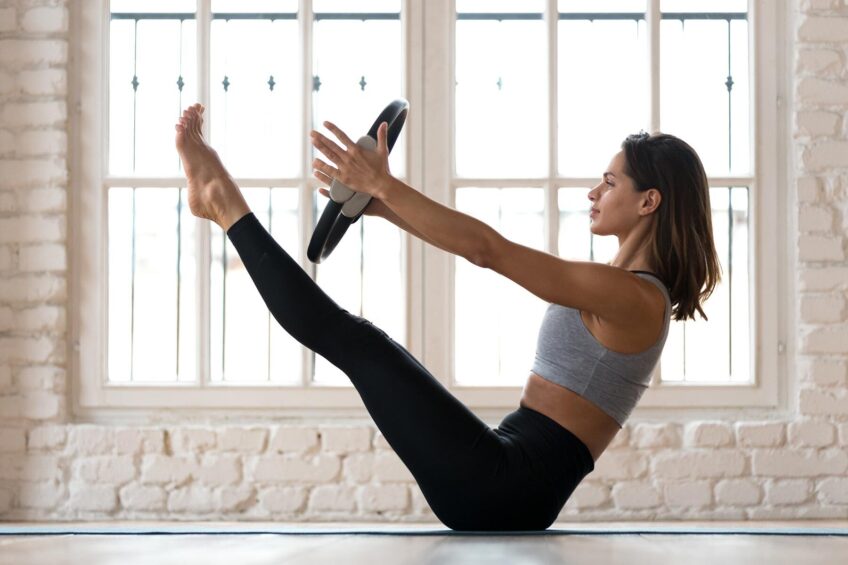
This is one of the most popular yoga poses for developing core strength, as it incorporates both the hip flexors and the abdominal muscles. In fact, it engages every muscle in your abdominals, particularly the transverse abdominals.
Try it for yourself:
- Begin in a seated position and start by drawing your knees towards your chest.
- Focus on pulling your belly button towards your spine to activate your core muscles, then carefully lift your feet off the ground.
- Balancing on your tailbone, straighten your legs, point your toes, and press your big toes together.
- Keep the arms straight and parallel with the floor ...avoid rounding your back.
- Hold the pose for 10 breaths or less if you find that you can no longer maintain proper form.
Pro Tip: Use a pilates ring to perfect your form. It can be placed in between your arms or even your legs.
3. Plank Pose (Phalakasana)
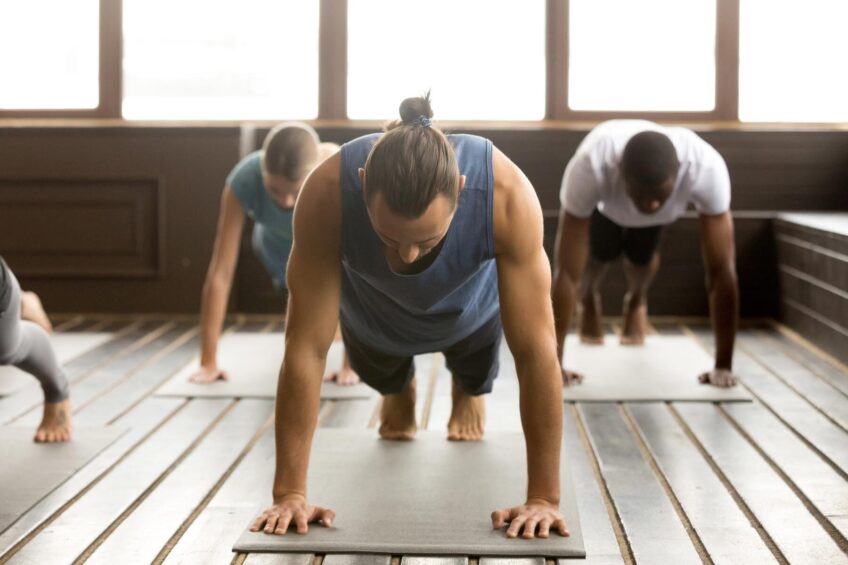
This is my all-time favorite -- you can do it anytime, anywhere, and you can build up slowly from 30 seconds to a couple of minutes. This pose strengthens and tones your body from the tips of your toes all the way out, with a specific focus on your back, shoulders, and abdominal muscles.
Try it for yourself:
- Start in a tabletop position. Ensure your hands are directly under your shoulders and your knees on the ground in line with your hips.
- Spread your fingers as wide as possible, and protract your shoulder blades by pushing them away from each other and pressing your hands into the mat.
- Tuck your toes under and lift your knees off the ground, stepping back to create a straight line from your heels to your shoulders.
- Make sure your hips are in line with the rest of the body -- they shouldn’t sag or lift too high.
- Hold for 10 breaths or until you can no longer maintain proper form.
Pro Tip: To further engage your core (and arms), you can add in a push-up.
4. Forearm/Dolphin Plank (Phalakasana)
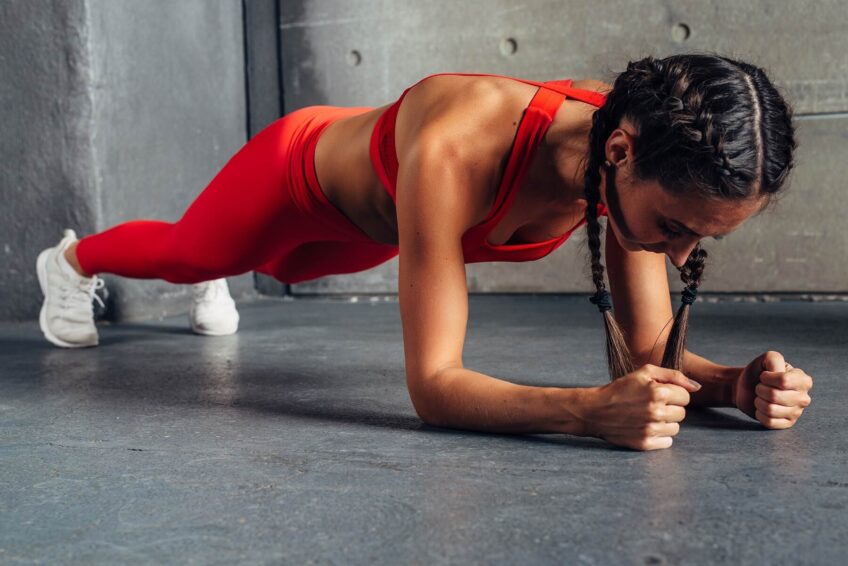
This post is very similar to the Plank Pose; it's just a little bit more challenging. It’s ideal for strengthening the lower back (essential for core strength) and building endurance.
Try it for yourself:
- From a tabletop position on your hands and knees, place your forearms and palms on the floor.
- Check your elbows are directly under your shoulders and that your upper arms are perpendicular to the floor.
- Carefully walk your feet back, keeping your pelvis and legs aligned with your shoulders.
- Curl your toes under, lift your knees, and straighten your back.
- Remain conscious of your hips, keep them in line with your spine, and don’t let them sag.
- Lift the back of your head to keep your neck’s natural curvature lengthening out through the crown of your head.
- Hold for 10 breaths (or until you reach the point where you are unable to maintain proper form).
Pro Tip: You can bring cardio variations to this pose by jumping your feet close and wide. Alternating leg crunches will also turn up your core heat!
5. Locust Pose (Salabhasana)
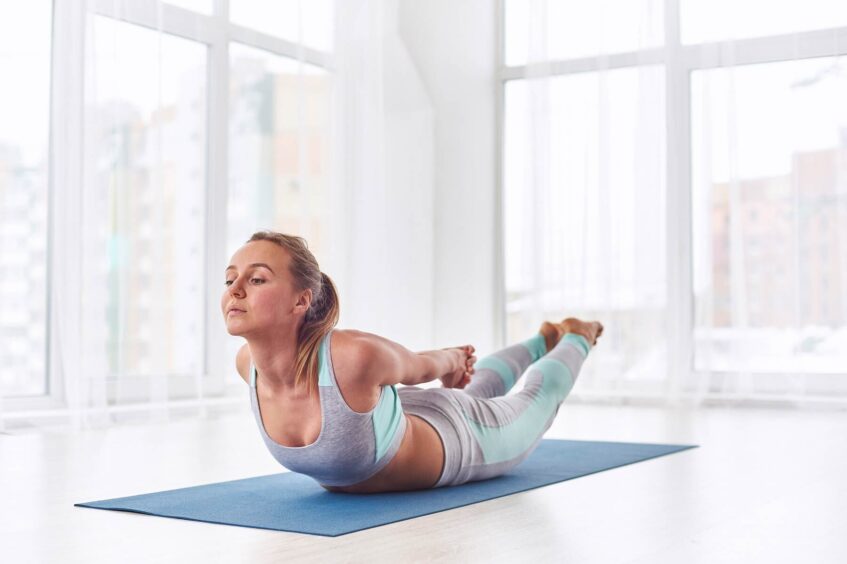
Counter poses are one of the most important aspects of yoga, and the locust pose is the ideal counter for the poses above that focus on the abdominals.
Try it for yourself:
- Lie down on your stomach and place your hands, palm down, next to your chest to make chicken wings with bent elbows.
- Keep your legs close together, point your toes, and lift your chest off the mat using your back muscles (not your arms), curving your spine upwards.
- Lift your legs and feet off the map, reaching the crown of your head to the ceiling.
- Slowly bring your arms behind your back and try to interlace your fingers.
- Straighten your elbows and focus on using your breath to lift your chest further off the mat.
- Reach backward with your arms.
- Hold for 10 breaths, breathing deeper into the pose each time.
Pro Tip: If you can't get your arms behind your back, start with them in front of you in a superman pose.
What Do I Think?
All yoga poses work a variety of muscles, and, as someone a couple of years down the road in my yoga journey, I’m still discovering muscles that I never knew I had!
I’ve enjoyed building core strength because it’s not just about physical progress on the mat. I’ve found that building core strength builds mental resilience as I get physically stronger and can hold poses for longer.
It also translates into the rest of my life. I can sit up straight at my desk for longer, and my lower back pain has all but disappeared, thanks to a stronger core.
Almost any yoga pose works to build core strength from the inside out, but it does so gently, and you can go at your own pace. The poses above are my top yoga poses for building core strength, but dozens of others are as good.
My top tip for those starting with yoga is that it’s not necessarily finding the best poses because there are so many; rather, it’s how you do them.
Focus on getting the position right, keeping form, and maintaining your breathwork for the best results.
Tony Lee, MS, RD
Tony Lee, RD, MS, is a highly qualified and accomplished Registered Dietitian with a Master’s Degree in Nutrition Sciences. Tony brings over two decades of experience in dietetics, specializing in sports nutrition. Interests include studying all aspects of wellness, fitness, genetics, and peak health performance.












